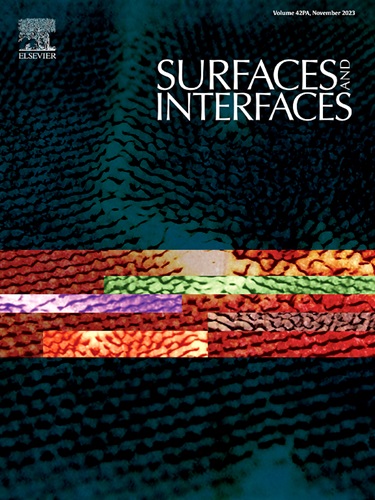Adsorption mechanism of hexachlorodisilane for low-temperature atomic layer deposition of silicon nitride
IF 5.7
2区 材料科学
Q2 CHEMISTRY, PHYSICAL
引用次数: 0
Abstract
Thin films of silicon nitride (SiNx) are used as dielectric layers, passivation coatings, and barrier layers, which are crucial for enhancing the performance, reliability, and durability of semiconductors and display devices. Due to increasing miniaturization of devices, atomic layer deposition (ALD) of SiNx is gaining large interest. Especially, thermal ALD of SiNx at lower temperature is desirable to minimize damage of the substrates and to ensure excellent conformality. While hexachlorodisilane (Si2Cl6) is one of few precursors that can enable low-temperature thermal ALD of SiNx, its surface chemical reaction mechanism has not been clarified yet. In this study, the surface reaction mechanisms of silicon tetrachloride (SiCl4) and Si2Cl6, representative precursors for SiNx ALD, are compared. Using density functional theory (DFT) calculations, the mechanisms of precursor adsorption on SiNx surface and subsequent reactions with the counter-reactant NH3 were investigated. Higher reactivity of Si2Cl6 was identified during both the precursor adsorption and removal of Cl by NH3 co-reactant, attributed to the Si-Si bond present in Si2Cl6. Current results suggest that the presence of the direct Si-Si bond within the precursor molecule can be a crucial factor for enabling low-temperature ALD processes.

求助全文
约1分钟内获得全文
求助全文
来源期刊

Surfaces and Interfaces
Chemistry-General Chemistry
CiteScore
8.50
自引率
6.50%
发文量
753
审稿时长
35 days
期刊介绍:
The aim of the journal is to provide a respectful outlet for ''sound science'' papers in all research areas on surfaces and interfaces. We define sound science papers as papers that describe new and well-executed research, but that do not necessarily provide brand new insights or are merely a description of research results.
Surfaces and Interfaces publishes research papers in all fields of surface science which may not always find the right home on first submission to our Elsevier sister journals (Applied Surface, Surface and Coatings Technology, Thin Solid Films)
 求助内容:
求助内容: 应助结果提醒方式:
应助结果提醒方式:


